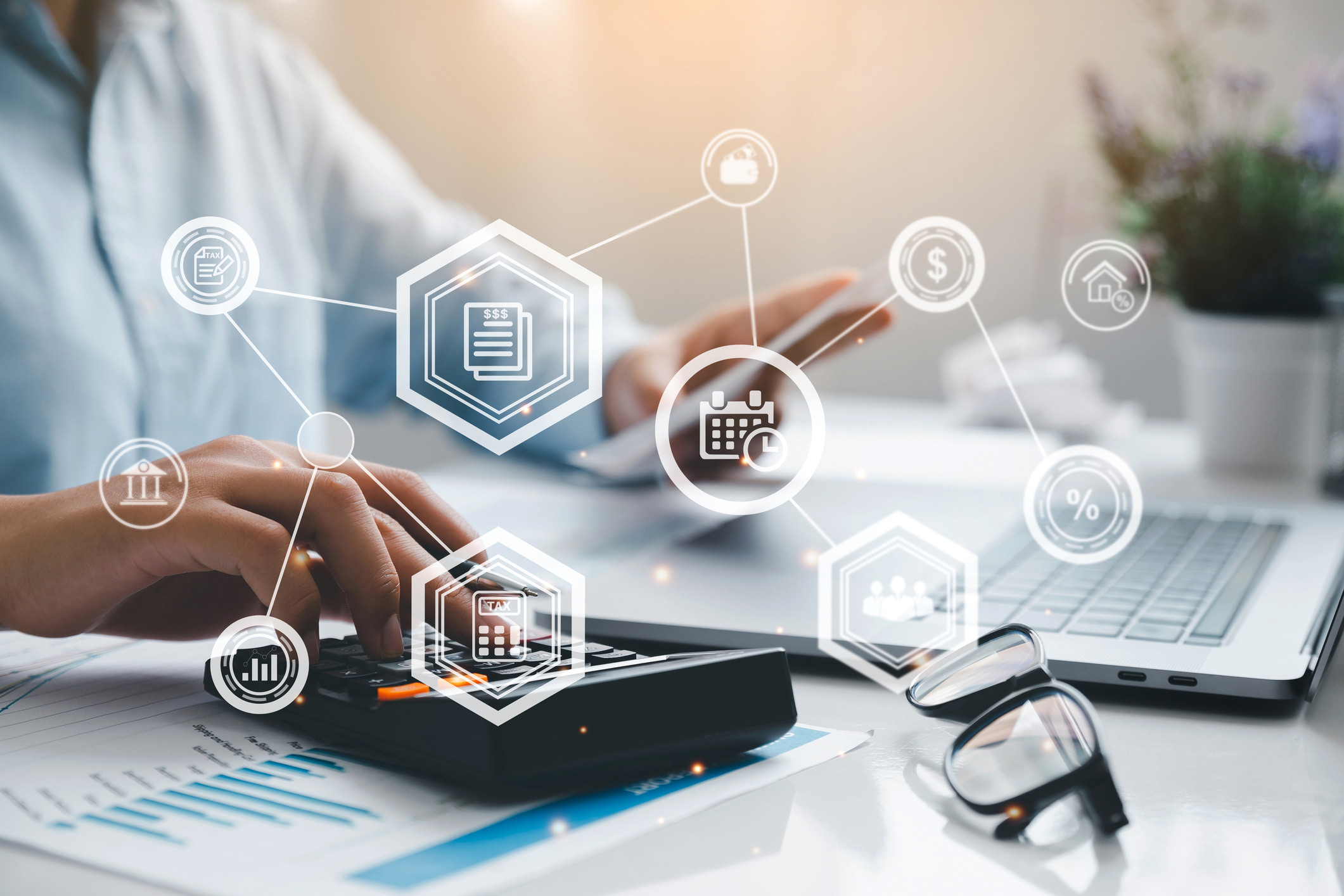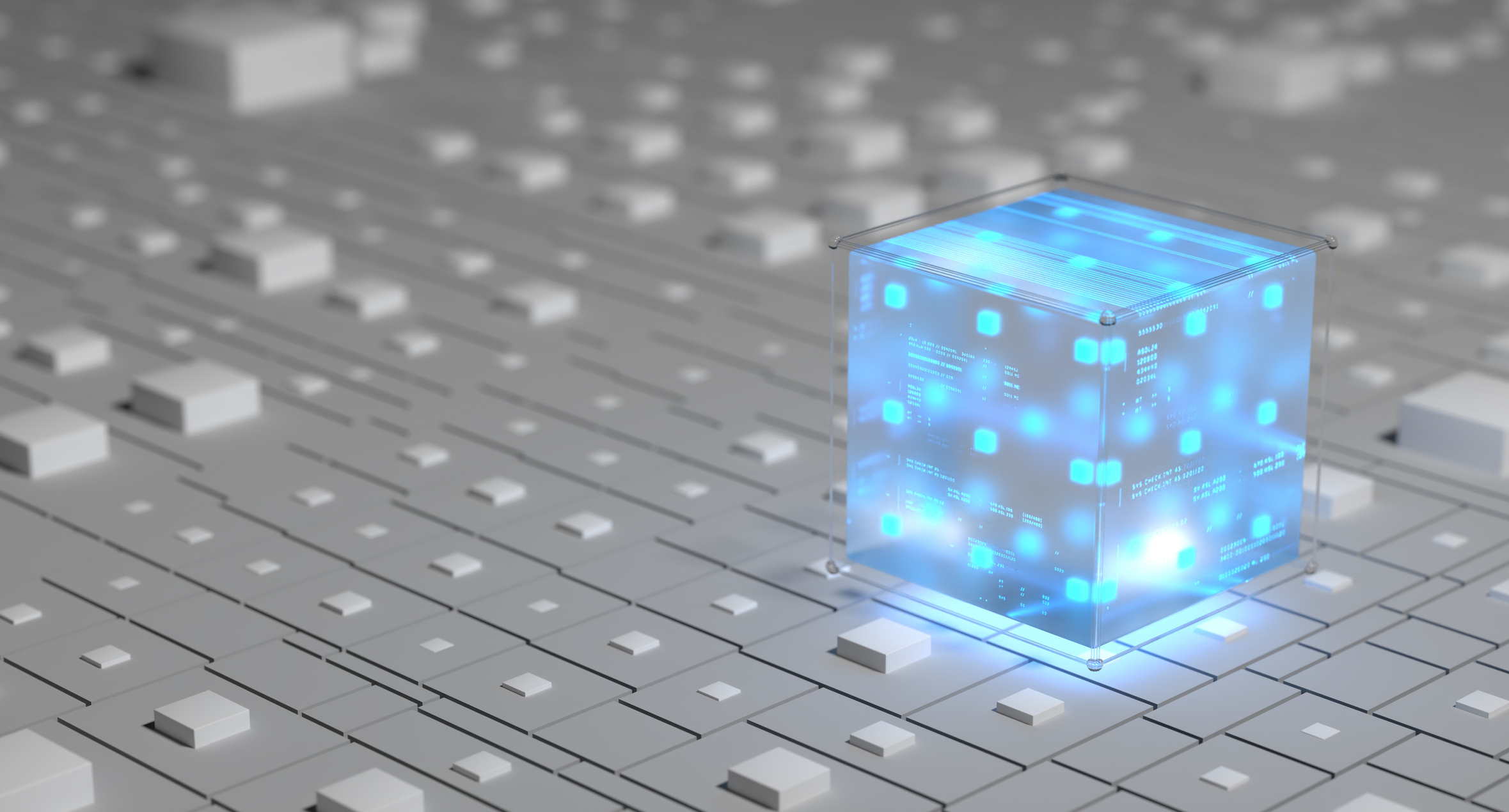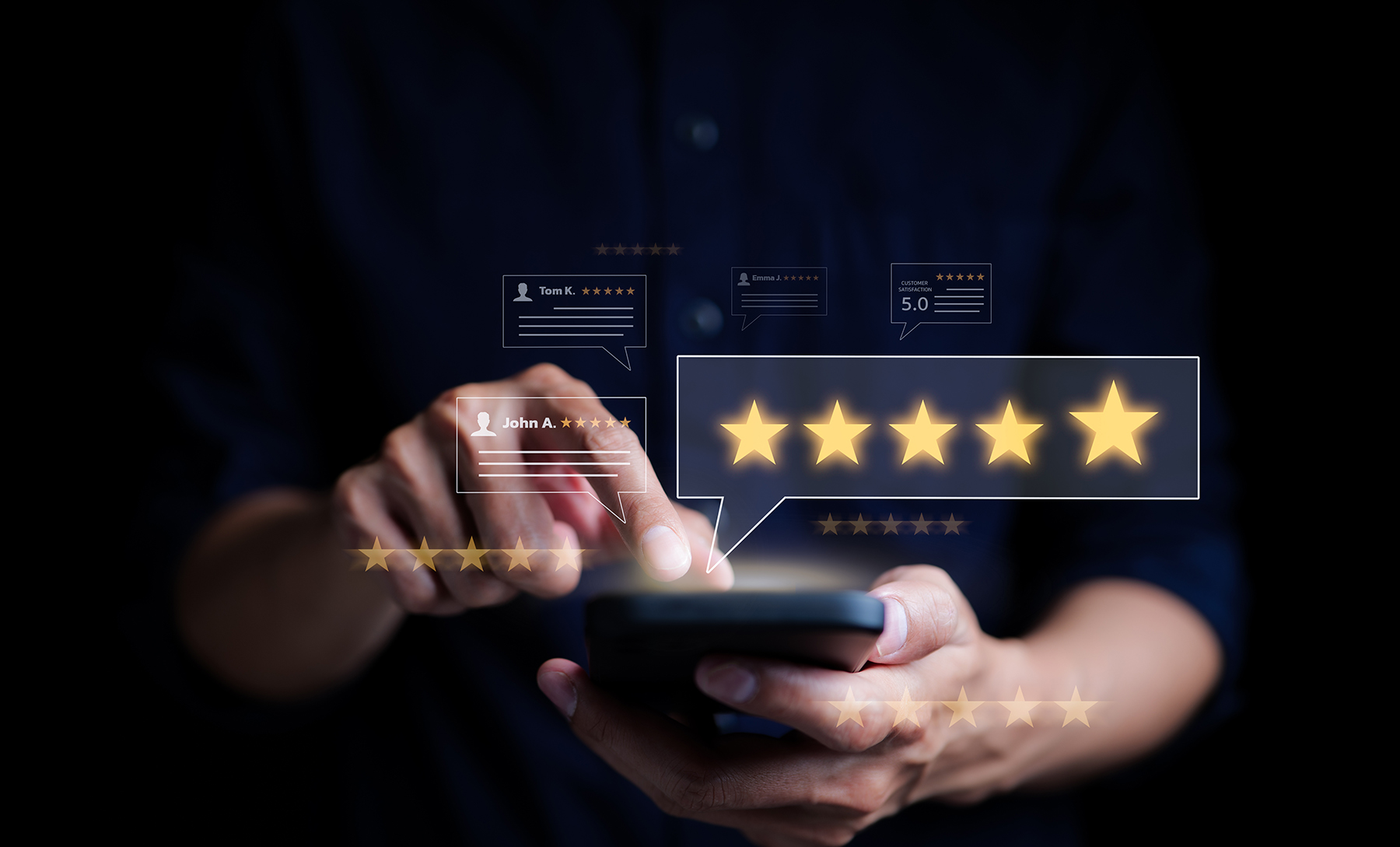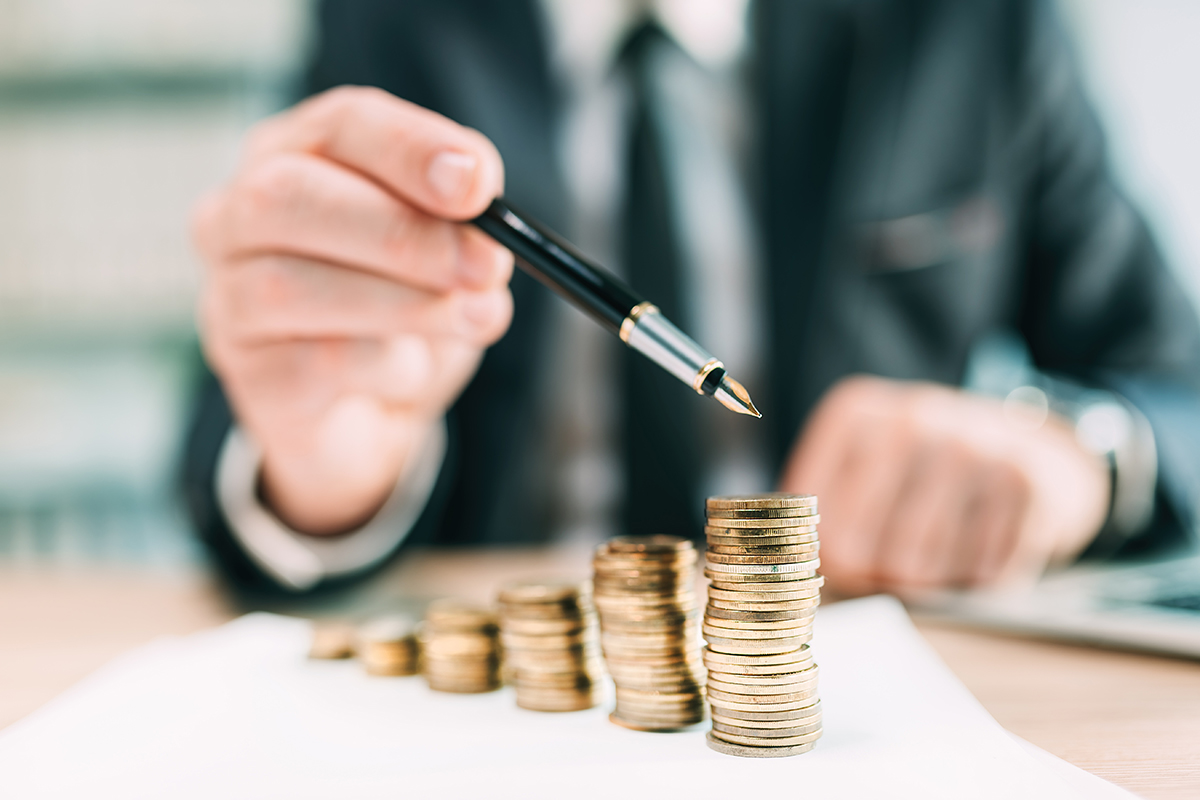Microservices: A Smarter Way to Buy Business Software
What if your software didn’t have to be all or nothing? What if you could scale just one feature, upgrade without breaking the rest, or only pay for the parts you use? That’s the promise of microservices. Instead of building applications as a single, rigid system, microservices break them into smaller, independent services—each handling one function and communicating with others via lightweight protocols.
What Are Microservices?
Microservices are a modern architectural style where applications are built as a collection of loosely coupled, self-contained services. Each service encompasses a single need (sometimes just one task and sometimes a handful of related capabilities), such as user login, payment processing, or data analytics. That independence makes it easier to build, deploy, and scale software, especially in fast-changing business environments.
While the benefits to developers are obvious, microservices architectures are important for consumers too, because they open new flexibility in the technology tools we use at work. Microservices-based applications typically can be purchased on a per-service basis, allowing organizations to buy only what they need. They also enable microtransactions-based billing, which tailors the cost of technology to how much a particular service or feature gets used by the consumer. The emergence of these products is just beginning, so analysts are still unsettled on how to refer to these breakthrough products. Other terms they use to describe this idea may include composable technology, flexible consumption, consumption-as-a-service, and even micro frontends.
Why Microservices Matter
Traditional systems (called monolithic) bundle all functionality into one codebase. Updating or fixing one part often affects everything else. Microservices eliminate that risk. Teams can work on individual features without causing system-wide disruptions, cutting down bottlenecks, deployment delays, and downtime.
Microservices also simplify buying and billing for business technology customers, who can customize the capabilities they need as their business environment changes. Microservices can also be billed based on the individual services used and are typically set up with microtransactions-based (or usage-based) billing. Companies who only occasionally use a microservice pay less than companies who use the same service regularly.
Microservices vs. Other Architectures
Microservices aren’t the only way to build software—but they offer more flexibility than older models. Here’s how they compare to other architectures:
- Monolithic – One large, interconnected codebase that’s simple to build and hard to change
- Modular – Some functional separation, but components are still interdependent, and modules still contain large feature sets.
- Microservices – Smaller feature bundles are always available to all users, but users pay only for those they use during a billing cycle, and many services are billed based on usage, so there is a better match between what the customer pays for and what they actually consume.
What This Guide Covers
This page will help you understand what microservices can do—and how to make them work for your business. We’ll cover:
- How microservices compare to monolithic and modular systems
- Where they deliver value across automation, infrastructure, and development
- What it takes to adopt them successfully and where to start
Whether you’re a small business or a large enterprise, microservices can help you build smarter, more flexible systems and right-size your technology cost, so you don’t pay for features you don’t use.
Why Microservices Are Reshaping Enterprise Technology
Software systems weren’t designed to keep up with how fast businesses move today. As demands grow, the cracks in older architectures start to show, as products are slow to adapt and expensive to update. Microservices offer a different approach: one built around flexibility and speed. To understand how they impact enterprise technology, it helps to look at where traditional systems fall short—and how microservices are filling the gap.
The Shift from Monolithic to Composable Architecture
Traditional Systems Create Bottlenecks
Most older applications were built as monoliths. Everything—every feature, workflow, and function—lives inside one tightly connected codebase. That might seem efficient at first, but it quickly becomes a liability. A small change in one part of the system can break something unrelated. Teams move slower, not because they want to, but because the system requires it.
Even basic updates start to carry risk. Adopting a new feature means retesting the entire application. The result is slower cycles, longer delays, and growing pressure on IT teams to work around the system instead of with it.
For consumers, monolithic systems lock companies into feature sets that don’t flexibly adapt, requiring the company to endure buying cycles where multiple options are reviewed and new contracts with new vendors signed each time they want to add or change available functionality.
Monolithic Codebases Slow Innovation
As these systems grow, they become unwieldy for development teams. New features are layered onto old ones, and code is reused in ways that weren’t originally planned. Over time, that creates overlap, redundancy, and friction. Even when the fix is clear, the path to get there isn’t.
The more bloated the codebase becomes, the harder it is to make changes with confidence. Developers spend more time tracing dependencies than writing new code. This results in a lack of room to move within the codebase, and may slow delivery of innovation to consumers.
Microservices Unlock Agility
Microservices offer a different structure. Instead of one massive application, you have smaller, independent services—each handling a specific task like login, billing, or reporting. They run separately and communicate through APIs, so updates or fixes can happen without impacting the rest of the system.
This flexibility speeds up everything. Teams can adopt updates faster, isolate issues more easily, and scale individual services as needed. Most important, the software stays aligned with the business—able to evolve as goals shift, without forcing a full rebuild or even re-buy every time. Customers further benefit from the microservices architecture, because it enables them to avoid paying for unused features.
Business Benefits of Composable Technology
Modular Delivery Supports Smarter Releases
Microservices let businesses deploy only what they need—no bundling dozens of features just to launch one or paying for huge license tiers just to access one or two critical capabilities. That keeps systems lean and reduces the overhead of managing unused components. Each service runs on its own schedule, so updates aren’t delayed by unrelated projects or slowdowns elsewhere in the platform.
This makes releases less fragile and more focused. When a feature can go live without dragging the whole system into a new release cycle, teams get more flexibility to iterate, respond to user feedback, and resolve edge cases quickly. Modular delivery also supports versioning, so customers can test new features without destabilizing existing workflows.
Innovation Moves Faster
In a composable system, engineering teams can develop and ship in parallel. Because each service is independent, developers don’t need to wait for a shared release window or navigate complex interdependencies. Teams can build, test, and push updates on their own terms—without stepping on another team’s progress. This supports faster experimentation, smaller iterations, and better alignment with business needs. Feature ideas can move from concept to prototype without red tape.
Innovation moves faster for customers as well. Microservices are always available and simply need to be turned on or accessed—no new licensing agreements or subscriptions needed. In this environment, teams can try things and course-correct as needed to respond quickly to an evolving marketplace and shifting customer needs. The composable nature of microservices encourages a business culture of innovation grounded in responsiveness, not guesswork.
Uptime and Stability Improve
One of the most practical advantages of microservices is fault isolation. When a bug appears in a monolith, it can ripple through the entire system. With microservices, an issue in one component stays contained, while the rest of the platform continues to function normally.
This containment improves reliability and protects the user experience. Instead of widespread downtime, you get targeted error handling. Teams can reroute traffic, spin up backups, or roll back specific services without affecting the full application. Monitoring also improves, since each service produces its own logs and telemetry—giving teams clearer insight into where problems originate.
Developers Can Move Without Roadblocks
Microservices make it easier for development teams to take ownership of their work. Each service is managed by a specific team, operating in a smaller, more focused codebase. That means fewer meetings, fewer dependencies, and more autonomy to build and deploy without friction.
It also improves team morale and velocity. When developers aren’t bogged down by coordination overhead or legacy sprawl, they can deliver value faster. New hires can ramp up more easily, too; learning one service at a time rather than a sprawling system. This structure encourages technical craftsmanship and reduces time spent navigating blockers.
Pricing Aligns with Actual Usage
Composable platforms open the door to usage-based pricing models. Instead of licensing entire systems or buying feature bundles, businesses can pay only for the services they use—down to specific APIs, actions, or consumption thresholds. That makes it easier to scale software in line with growth, and to turn off (and stop paying for) unused services as business needs change.
For finance and IT leaders, this model creates visibility into what tools are driving value. It also makes budgeting more dynamic. As needs shift, companies can turn services on or off, scale up or down, and avoid sunk costs on features they don’t need. It’s a more agile way to manage spend without sacrificing functionality.
Flexible Consumption and Consumption-as-a-Service
Microservices change more than just architecture—they shift how software is bought and sold. Instead of fixed bundles or flat licenses, companies can turn features on and off as needed. That flexibility gives buyers more control and opens new opportunities for vendors to align pricing with actual value.
Usage-Based Delivery
Microservices let companies activate only the functionality they need. Instead of provisioning and paying for entire systems, teams can spin up services on demand, reducing waste and improving focus. This model keeps platforms lean and responsive, especially during iterative development.
It also makes scaling more precise, because this microservices architecture enables usage-based pricing. Whether supporting a surge in traffic or testing a new feature, businesses can allocate resources at the service level—without overhauling infrastructure or overcommitting budget. The result is a more efficient, targeted use of both time and spend.
Revenue and Flexibility Benefits
Usage-based architecture benefits both sides of the software relationship. Vendors can monetize individual features based on demand, while buyers commit only to what they need. This creates clearer value alignment and opens the door for tiered or dynamic pricing models that reflect actual consumption.
It also supports smarter growth strategies. Providers can offer core functionality with optional add-ons, enabling easy upsells without bloating the platform or requiring full system upgrades. For buyers, it means more control—scaling up or down without committing to unused capabilities or long-term contracts.
Embedded AI
Microservices make it straightforward to embed AI into individual services, such as anomaly detection in billing or content personalization on the front end. Each AI-enabled component can evolve independently, so models can be retrained or swapped out without system-wide changes.
This targeted intelligence improves both performance and governance. Services use data scoped to their specific domain, producing more accurate insights. At the same time, model updates are less risky and easier to monitor, letting teams iterate on AI functionality without worrying about platform-wide regressions.
Microservices vs. Modular vs. Monolithic
Choosing the right architecture (microservices, modular systems, or monoliths) has lasting implications for how software evolves. While each approach can deliver functional applications, their internal structure, flexibility, and scalability differ in ways that matter to growing businesses.
Granularity and Agility
Microservices break software into focused, independent parts. Each service runs on its own, with separate code, infrastructure, and often its own data store. That separation gives teams full control over how each piece is developed, tested, deployed, and maintained—without needing to coordinate with unrelated parts of the system.
This modularity reduces bottlenecks and makes releases safer. A change to one service won’t impact the rest of the application, which means teams can experiment more freely and resolve issues faster. It also enables targeted rollbacks because fixes can be deployed to just one service without disrupting the platform. As systems scale, this kind of agility helps product development teams stay responsive, even as complexity increases, and it streamlines innovation for end users.
Common Misconceptions
Microservices are often misunderstood, even by experienced teams. They’re not a one-size-fits-all solution, and confusion around what they are (and aren’t) can lead to poor implementation or overengineering. Here are some common misconceptions:
- Microservices aren’t just modular — they isolate code, data, and runtime to ensure true service independence. In addition, microservices are typically composed of smaller feature bundles, whereas modular products usually combine entire products into one licensing agreement.
- They aren’t always better — distributed systems introduce complexity, requiring orchestration, monitoring, and strong DevOps support.
- Not all SaaS products use microservices — many still run on monolithic or hybrid architectures that serve their needs effectively.
Finding the Right Fit
There’s no universal answer. Microservices offer the highest flexibility but demand greater operational overhead. Modular architectures can serve as a middle ground, providing some autonomy while keeping systems manageable. Monoliths may work well for small teams or tightly scoped products but often create bottlenecks as complexity grows.
The right architecture should reflect your business goals, team structure, and how fast you need to adapt. Microservices are ideal for organizations prioritizing speed to market, resilience, and continuous delivery. Whether you’re a development team or a potential end user business, your choice should serve long-term scalability and performance, not just current trends.
Understanding the Microservices Ecosystem
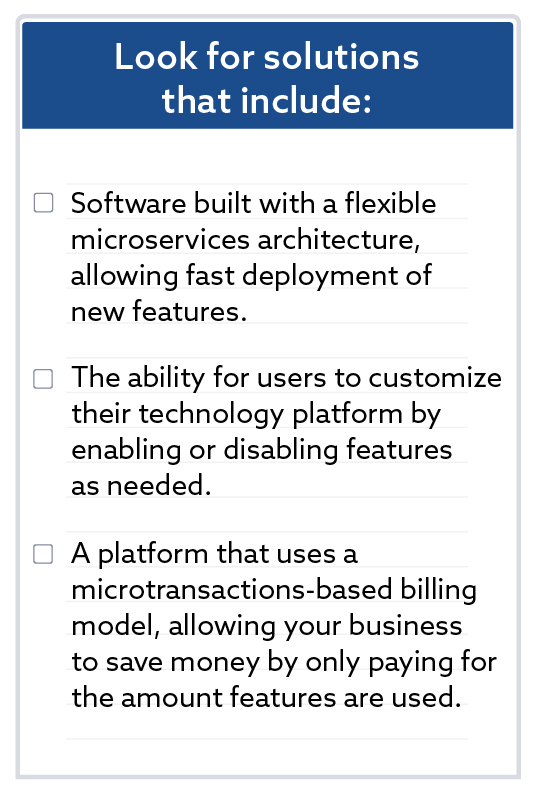
PBCs
PBCs group microservices into cohesive units (like customer onboarding or payment processing) with their own logic, data, and APIs. As a result, PBCs like these allow fusion teams to self‑assemble applications more rapidly.
By functioning as standalone modules, PBCs support reusable, version-controlled deployments. Teams can update or swap one business function without disturbing others, reducing risk and speeding innovation. This modularity also helps align development with evolving business needs—letting you treat discrete services as interchangeable, scalable assets.
API-First Development
APIs serve as the communication layer between microservices, defining clear contracts for data exchange and error handling. When adopting API‑first development, teams lay out these contracts before they write code. API-first design defines interface contracts before code, reducing integration bugs and simplifying onboarding as services evolve.
An API-first development approach makes it simpler to plug in partner systems and update services without disrupting downstream functionality. It protects against versioning issues and fragmented handoffs, keeping the system resilient as new features or endpoints are added.
Containerization
Containers allow microservices to be developed, tested, and deployed in isolated, portable environments. Each container includes just what the service needs—its code, libraries, and runtime. That isolation ensures consistency between development and production. Developers can test locally with confidence that their service will behave the same once deployed.
Containers also enable more sophisticated scaling strategies, such as spinning up multiple instances of a high-traffic service without touching the rest of the stack. Tools like Kubernetes automate container deployment and scaling, enabling responsive infrastructure that adjusts in real time. For customers, this scalability means they can run multiple processors side-by-side to complete tasks quickly, without paying more for a usage-based service.
Execution Tracking and Usage-Based Billing
Modern architectures often track usage for each microservice—including API calls, runtime duration, or compute usage. This enables pay‑per‑use billing models where cost aligns directly with value delivered.
Execution metrics also offer operational intelligence: teams can see which services drive adoption, spotlight performance bottlenecks, and adjust capacity accordingly. That transforms infrastructure from a static expense into a transparent, strategic tool—helping businesses tune services based on real-world usage patterns and needs.
How Microservices Are Transforming Core Business Functions
Automation and Process Efficiency
As businesses automate more of their operations, agility and adaptability become critical. Microservices support that shift by giving teams the tools to build smarter, faster workflows—without being held back by rigid infrastructure. From hyperautomation to continuous improvement, this architecture makes it easier to modernize how work gets done.
Supports Hyperautomation
Microservices are a natural fit for hyperautomation because they decouple core business processes into discrete, automatable services. This makes it easier to replace manual or semi-automated tasks with intelligent workflows that adapt over time. For example, document validation, fraud detection, and routing logic can each run in separate microservices that are orchestrated as a whole. When departmental workflows are built this way, individual components can be improved or replaced without disrupting the broader system—supporting long-term automation without rigidity for the enterprise.
Flexible Updates Without Rebuilds
In traditional systems, even minor updates can require full application redeployment. With microservices, each service can be updated, versioned, or retired independently. This is especially useful for process-driven applications like order management or compliance checks, where rules and logic evolve frequently. Teams can release updates to one service without touching others, reducing downtime and removing the need for large, coordinated code freezes. The result is greater speed and reliability in operational automation.
Product Development and Feature Delivery
Modern product teams are under constant pressure to deliver value faster. Microservices remove many of the traditional barriers—enabling teams to build, test, and ship features without waiting on platform-wide release cycles. This architecture doesn’t just accelerate delivery; it helps teams focus on what matters most to customers by reducing overhead and unlocking more responsive iteration.
Reduces Waste
Microservices allow product teams to focus only on the features that deliver measurable value—no more bundling unnecessary tools just to meet release deadlines. Because each service is scoped to a specific function, teams can validate demand early and avoid building features that don’t gain traction. This helps reduce engineering overhead and supports lean product development. Features that underperform can be deprecated without affecting other parts of the system.
Accelerates Iteration
By isolating features into their own services, developers can build, test, and ship updates without waiting on full-team coordination. This enables shorter development cycles and more frequent deployments. Microservices also support practices like feature flags and blue-green deployments, which make it easier to test changes in production without risk. Teams can roll back specific services or test new features with a subset of users—keeping iteration fast and failure contained.
Customer Experience
Great user experiences now define platform success. Microservices let teams adjust front-end features quickly without changing the whole system. That makes it easier to personalize by responding to what users actually want—without slowing everything down or rebuilding core infrastructure. It’s a smarter way to keep users engaged.
Enables Personalization at Scale
Microservices allow front-end components to dynamically assemble based on user preferences, pulling only the services needed for each customer. This creates tailored experiences without slowing the system or overloading developers. Recommendation engines, regional pricing, language settings, or customer-specific features can all operate independently, improving user experience at scale. Since services are decoupled, brands can roll out personalization features incrementally—no full rebuilds or system-wide updates required.
Responsive to Feedback
Isolated services make it easier to respond directly to customer input. Usage analytics or survey results can trigger real-time updates to specific components—like checkout flows or support chat—without touching the rest of the platform. Teams can A/B test in production, roll back underperforming changes, or optimize for niche segments quickly. This agility enables continuous improvement without waiting for a full product cycle, keeping platforms responsive to real-world behavior and evolving customer needs.
SMB and Mid-Market Enablement
Microservices make it easier for smaller teams to access advanced capabilities without committing to expensive, all-in-one systems. Instead of overhauling their entire tech stack, they can adopt just the services they need, one at a time. This approach lowers upfront costs, reduces complexity, and makes modernization more practical and sustainable.
Enterprise-Level Power, Right-Sized Cost
Microservices let smaller teams adopt powerful, enterprise-level capabilities—like automation, data visualization, or AI—without building a full tech stack. Services are deployed individually, so you can skip the overhead of features you don’t need. That lowers implementation barriers and keeps costs aligned with usage. Businesses can experiment with one feature, expand as needed, and avoid paying for complex systems that don’t fit their current size or maturity.
Reduces Transformation Barriers
Traditional software upgrades can feel overwhelming for SMBs, especially when an upgrade requires major upfront investments or rip-and-replace migrations. Microservices lower that risk by enabling gradual adoption: one service at a time, with no need to refactor everything at once. That means teams can modernize critical workflows while leaving legacy tools intact until they’re ready. It makes transformation a path of progress, not a moment of disruption—letting smaller orgs evolve at a pace they can sustain.
IT Operations and Infrastructure
Today’s infrastructure needs to adapt constantly while staying reliable. Microservices offer IT teams a strategic path forward by breaking large, rigid systems into smaller components that are easier to manage and update. Instead of risky, all-at-once migrations, teams can replace legacy systems gradually—without disrupting critical operations. This approach reduces complexity over time and gives teams better control over uptime, performance, and scalability as demands evolve.
Lowers Technical Debt
Legacy systems are difficult to maintain because they’re tightly coupled and hard to upgrade. Microservices allow teams to phase them out incrementally, replacing one function at a time while leaving the rest of the stack untouched. This reduces the risk of large-scale rewrites and spreads effort over time. By isolating upgrades, technical debt can be addressed at the service level, improving agility and freeing teams to innovate rather than constantly patch old code or navigate tangled dependencies.
Improves Resilience and Uptime
Because microservices are containerized and run independently, failures can be isolated and fixed quickly, keeping the rest of the system stable. If one service crashes, it can be restarted or scaled separately—keeping the rest of the application stable. Tools like Kubernetes help automate monitoring, failover, and recovery, improving overall system reliability. This modular design also simplifies testing and rollback, giving operations teams more ways to maintain uptime and deliver consistent performance under load.
Microservices Across Core Industries
Microservices have become a cornerstone of digital strategy across industries that need agility and the ability to scale fast. While their benefits apply broadly, certain sectors have emerged as early adopters due to their complex systems, compliance demands, or customer-facing pressures.
Healthcare
Hospitals and healthtech platforms use microservices to manage sensitive workflows—like patient records, billing, and diagnostics—without risking widespread downtime. Decoupling services makes it easier to meet privacy regulations and update features without disrupting care delivery. It also supports secure data exchange between departments and systems, enabling more connected, patient-centered care.
Education
Microservices help schools and edtech companies personalize learning, manage user access, and roll out new modules quickly. As digital classrooms expand, composable systems support everything from virtual labs to attendance tracking—adaptable across grade levels and learning models. This modularity also allows faster integration with third-party tools, making it easier to tailor platforms to district needs or individual learning styles.
Financial Services
Banks and fintechs use microservices to support modular products like mobile payments, fraud detection, and account management. Real-time responsiveness and usage-based scaling are essential in a sector where milliseconds matter and compliance is non-negotiable. Microservices also enable continuous deployment of security updates and new features without disrupting core systems—helping firms stay agile in a regulatory and competitive environment.
Government
Agencies modernize legacy infrastructure by breaking down monolithic systems into independent services. Microservices enable faster delivery of citizen services, easier data sharing across departments, and more resilient digital infrastructure—especially under cloud-first mandates. This architecture also supports modular compliance and security updates, allowing governments to respond quickly to policy shifts or emerging threats without overhauling entire systems.
Manufacturing
From inventory tracking to predictive maintenance, manufacturers rely on microservices to connect IoT devices, automate supply chains, and react quickly to changes in demand. Independent services reduce downtime and streamline operations across distributed environments. This agility supports just-in-time production models, enabling factories to optimize resources and adapt rapidly to shifts in global supply or customer needs.
Small and Midsize Businesses (SMB)
Microservices allow smaller teams to tap into enterprise-level capabilities without the complexity. By adopting only what they need, SMBs can modernize on their own timeline. As a result, they can scale gradually, integrate with partners, and keep costs predictable. This approach also reduces technical debt, so that teams can stay nimble and competitive as they grow, without being held back by rigid systems or oversized infrastructure. This flexibility is particularly important to teams like Accounts Payable (AP) and Human Resources (HR) where documents dominate daily work and regulatory compliance is critical.
Emerging Trends in Microservices
Microservices have gone from a technical strategy to a business essential—and now, a new wave of trends is shaping how they’re used. What’s emerging isn’t just faster or smarter infrastructure; it’s a shift in how companies build and evolve their systems. From edge deployments to embedded intelligence, these changes are setting the direction for what modern platforms can do next.
Event-Driven Microservices
Event-driven systems don’t wait around; they respond the moment something happens. A single user action or system update can trigger a targeted response without polling or delay. This model helps reduce processing load and enables real-time performance, especially in high-volume environments like logistics and digital payments. Instead of constant background checks, services stay idle until needed—making automation leaner and systems more responsive. Platforms like Kafka, AWS EventBridge, and our own Sys.tm® help teams build these reactive workflows at scale.
Platform Engineering and Internal Developer Platforms (IDPs)
As microservices architectures grow, so does the need for consistency behind the scenes. Platform engineering teams are creating IDPs to give teams a reliable, self-serve toolkit for deploying and managing services. These platforms standardize dev tools, streamline observability, and enforce best practices—so developers can spend less time wrestling with infrastructure and more time building features. IDPs also accelerate onboarding and reduce errors by making complex systems easier to navigate from day one. For users, low code no code visual interfaces simplify services setup, so workers can make adjustments on-the-fly as business needs change.
Edge-Ready Microservices
Microservices are increasingly deployed at the edge, close to the source of data. Running services on devices like factory sensors or mobile apps cuts latency and enables faster, more responsive actions. It also supports compliance by keeping sensitive data local. Instead of pushing everything through a central server, teams can make decisions about where the data lives—improving reliability, enabling real-time operations, and reducing the load on cloud infrastructure when low-latency performance is critical.
Future Projections
Analysts forecast that the global cloud-based microservices market will grow from $1.84 billion in 2024 to $8.06 billion by 2032, reflecting a CAGR of 20.3% as adoption expands beyond early enterprise use cases. Continued cloud migration, AI integration, and demand for modular systems are driving this surge. Meanwhile, improvements in container orchestration, API security, and developer platforms are making it easier for companies of all sizes to build and scale composable architectures.
Challenges and Considerations
Adopting microservices isn’t just a technical upgrade—it’s a strategic shift. From integration hurdles to organizational realignment and vendor strategy, understanding the challenges early helps teams avoid costly missteps and make smarter architectural decisions as they scale.
Cultural and Organizational Shifts
Moving from Centralized to Distributed Teams
Microservices enable a new way of working. Instead of centralized IT managing the entire system, responsibility passes to cross-functional teams who own the individual services they need and use. This structure speeds responsiveness to market shifts, but requires stronger communication to prevent drift across teams.
Legacy organizations may resist this shift. Without buy-in, IT teams may default to old habits—central approval, lengthy vendor evaluation requirements, or code ownership silos—defeating the purpose of modular design.
Aligning Around a Shared Strategy
A composable architecture only works when teams align on common principles and communication flows between technical and non-technical jobs. IT teams must understand business priorities, not just tech specs, while department heads and other leaders need to boost their understanding of technical needs and standards company-wide. Without clear architectural direction, teams may optimize locally but diverge system-wide. Shared documentation, open communication, and regular syncs can help keep service development coordinated.
Vendor Lock-in and Standardization
Risks of Proprietary Platforms
Though often designed with interoperability in mind, choosing a vendor’s microservices platform may reduce initial friction but can introduce long-term risk. Watch out for proprietary tooling that can restrict future options, making it hard to adopt emerging technologies or switch providers without major rework.
Safeguarding Flexibility with Open Standards
Prioritizing open standards creates flexibility. By using technologies like Docker and Kubernetes for containerization, organizations gain the freedom to deploy across multiple environments. This enables hybrid and multi-cloud strategies while lowering switching costs.
Standardized protocols like REST, gRPC, or GraphQL also reduce the burden of custom integration. Teams can swap components, add new features—or even integrate partners faster when services use broadly adopted languages and formats.
Proving ROI
Start with Strategic Wins
Microservices require upfront investment in training, tooling, and service design. That makes proving ROI essential—especially in companies where technical debt is already high. Rather than rebuild everything, teams should isolate pain points that are easy to decouple.
Fast-moving features, frequent updates, or user-facing experiences often make good starting points. These projects show how microservices improve organizational resilience, offer better customer experiences, and streamline critical tasks—creating proof points for broader investment.
Measure and Communicate Impact
KPIs must be identified before implementation begins. Service-level tracking enables visibility into how changes affect real usage. For example, monitoring deployment frequency or recovery time can show whether modularity is reducing bottlenecks and improving operational responsiveness. Microservices offer unique insight into how technology is actually being used to solve business challenges, so the justification for ongoing use or further investment should be clear. The results need to be framed in language that resonates with decision-makers.
Governance and Data Privacy
Enforcing Privacy and Regulatory Compliance
Depending on how core services are set up, sensitive data may flow between services, across vendors, and even into third-party APIs, making privacy enforcement more complex Microservices platforms that place documents and data security at the core, typically offer embedded cybersecurity tools that can help. Encryption, access control, and audit logging should be standard and applied uniformly. Use tagging/metadata to classify data, restrict service access by role, and automate compliance verifications within the platform itself.
Real-World Impact of Microservices

Sales Operations: Creating Monthly Reports Instantly
At a consumer goods company, the sales operations team no longer spends days compiling data. They highlight a folder of monthly Excel reports and prompt their AI tool to generate a comprehensive annual summary. The system totals key metrics, identifies top-selling SKUs, flags underperforming regions, and charts monthly trends. Within minutes, leaders receive a polished report. It eliminates the need for manual spreadsheets and gives teams more time to focus on insights, strategy, and real revenue generation.
Contract Management: Key Details at Your Fingertips in Seconds
A healthcare provider streamlines vendor agreement management using AI. Instead of searching through dense contracts, staff ask questions like, “What’s the termination clause for the imaging vendor?” The AI scans legal documents and returns concise, referenced answers. It also flags expiration clauses and tracks auto-renewals, helping teams minimize legal exposure. This ensures no key detail is missed, strengthens compliance processes, and lets staff spend less time buried in documents—and more time serving patients and managing partners.
Marketing Teams: Faster Campaign Launches from Existing Assets

Customer Service: Enable Higher Quality Customer Experiences
When a customer service team was challenged to improve overall customer experience ratings, they used a microservices-based product to track issue histories across multiple touchpoints. The resulting insights enabled them to modify key processes and assignments improving long-term customer relationships and enabling customer service to support lifetime customer value initiatives.
Human Resources: Automated Processes Put the Focus Back on Humans
A human resources team looked to microservices-based document management and automation tools when they needed to save costs by reducing the size of their workforce. Microservices allowed them to activate process automation so documents were routed throughout the company as-needed without requiring human intervention, saving time. They also accessed an AI service to analyze employee engagement data to make recommendations on policies and practices leading to a happier, healthier workforce across the enterprise.
The Future of Microservices
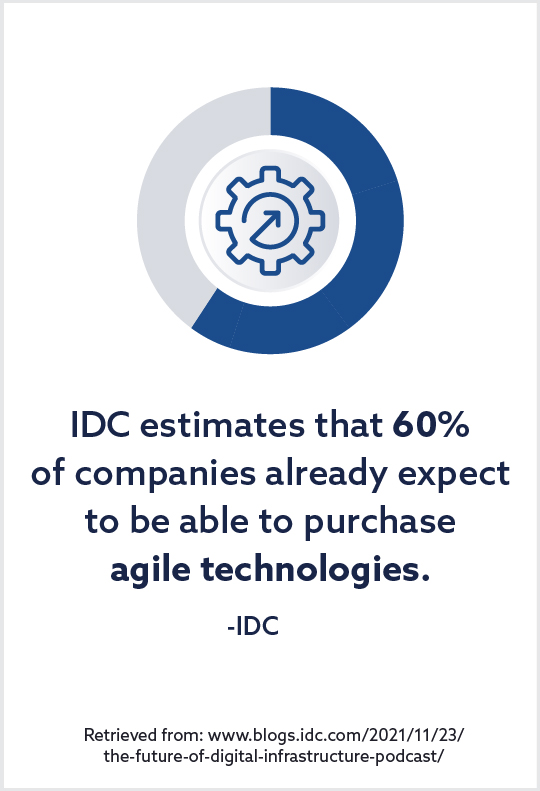
Microservices API-First Becomes the Norm
Composable platforms are replacing rigid, all-in-one systems. Instead of relying on a fixed stack, teams are adopting API-first models that let them activate only the services they need. Each function is modular and separately managed, so teams can build, deploy, and evolve features on their own timeline—and without broad coordination.
Modular Access to Capabilities

- Plug-and-Play Functionality — API-first design lets companies access features as standalone, yet fully integrated components. Whether it’s authentication or analytics, these services can be added, removed, or versioned without disrupting the whole system. That flexibility powers faster innovation, because teams can experiment with new tools and roll out updates incrementally, no full rebuilds required.
- Ecosystem-Ready Architecture — Modern platforms are built to integrate with others. Instead of locking users into a single product, microservices create opportunities for partner integrations, open developer ecosystems, and internal marketplaces. This unlocks value beyond the core product, enabling extensibility and stronger platform stickiness over time.
Interoperability Drives Flexibility
True flexibility comes from systems that can work together. As digital ecosystems grow more complex, interoperability has become a defining feature of modern architecture. Microservices, when designed around open APIs and shared protocols, make it possible for different tools and services to communicate seamlessly.
- Cross-System Communication — Interoperable microservices use standardized formats to exchange data reliably across diverse environments. This means internal systems and external partners can interact without custom code or brittle integrations. Whether syncing inventory between platforms or surfacing data from separate departments, these connections unlock efficiency and reduce duplication.
- Platform-Agnostic Deployment — With containerization and orchestration tools like Kubernetes, microservices can run consistently across cloud providers, hybrid setups, or on-prem environments. This reduces vendor lock-in and gives teams more control over where and how services are deployed. As a result, businesses can respond to technical needs or compliance requirements without reengineering their entire stack.
Preparing for a Composable Future

But microservices aren’t a magic switch. They require structural, cultural, and operational shifts. Here’s how to approach the transition—starting small, then building toward long-term value.
How Businesses Can Start with Microservices Today
Evaluate System Complexity and Rigidity
Before making architectural changes, take time to understand where your systems are breaking down. Long deployment cycles and cross-team coordination for even small updates are signals of tightly coupled architectures. These pain points often indicate that multiple parts of the application rely on shared components that limit flexibility. A single update may trigger ripple effects across the stack, forcing teams to delay releases or revert changes entirely.
Start by mapping out key dependencies. Identify where codebases overlap, where version mismatches occur, or where integrations are brittle. These areas often represent technical debt that’s grown quietly over time. Tools like architecture decision records (ADRs), dependency graphs, and incident postmortems can surface patterns that aren’t obvious in day-to-day workflows. Rather than attempting a full rewrite, use this analysis to target specific domains that would benefit most from a switch to microservices-based products.
Identify a High-Impact Use Case
The first implementation of microservices shouldn’t aim to transform the entire business. Instead, it should test the model in a setting where impact can be measured and complexity is contained. Look for use cases that create bottlenecks today and features that are frequently updated or rely on shared infrastructure. These friction points are ideal for proving the value of decoupling, since improvements in speed or reliability will be felt across the organization.
Strong candidates often include document approval flows or product pricing engines. These systems touch multiple business functions but can often be isolated without disrupting core workflows. A successful use case builds credibility and gives leaders a tangible reason to invest in broader adoption.
Choose API-First, Containerized Platforms
An API-first approach establishes a clear contract between services before a single line of code is written. It promotes modular thinking, enforces consistency, and makes integration more predictable. The key is to define standardized, well-documented interfaces early. This discipline reduces friction in development, simplifies testing and versioning, and makes it easier to onboard new teams as the system scales or evolves.
Containerization complements this approach by making services portable and isolated. Teams can package applications with all their dependencies, ensuring they run reliably across environments. This unlocks flexibility—services can move between staging and production without behavior changes. Containers also support horizontal scaling, tighter resource control, and simpler communication. Containerization lays the groundwork for consistent, resilient deployment across hybrid or cloud-native infrastructures.
Long-Term Strategic Considerations
Plan for Scalability from Day One
Infrastructure decisions matter early. Choose microservices platforms that prioritize scalability from the start—even if your system is small. A setup that handles five services without issues may buckle under fifty if patterns aren’t consistent. Then monitor and manage your traffic to get the most out of built-in scalable features. Scalability often supports usage-based pricing, so look for areas where distributing processing across simultaneous processors doesn’t increase the overall cost of your project, but may get it done in just a fraction of the time!
Create Fusion Teams Across Business and Tech
To make microservices effective, teams must do more than own their code—they need shared accountability for outcomes. Fusion teams bring together developers, product managers, analysts, and operations leads to co-own delivery. This cross-functional structure reduces silos and empowers teams to make better-informed decisions. When builders understand business goals, and strategists understand technical limits, alignment becomes built-in. Decisions will happen in context. Over time, this builds stronger feedback loops and a culture that values both engineering excellence and business impact—essential traits for company success.
Define Governance and Lifecycle Standards
Microservices thrive on autonomy—but without shared standards, that autonomy creates chaos. Inconsistent naming, missing documentation, and ad hoc deployment processes make it harder to scale. Governance is about creating simple, agreed-upon norms that support velocity. A lightweight framework helps teams move fast without breaking things, especially as more services come online and more teams contribute to the architecture.
Establish a baseline for how services are selected and deployed. As your services library grows, these standards support long-term evolution. The goal, then, is to create clarity and consistency across a fast-moving organization.
Integrate AI and Automation with Purpose
Microservices offer a natural framework for embedding AI—but the key is to do it deliberately. Focus on high-value use cases like fraud detection, product recommendations, or demand forecasting. Scoped deployment keeps complexity manageable and limits blast radius if things go wrong. Isolating models within individual services also makes it easier to retrain or roll back without affecting unrelated parts of the system.
Automation should evolve alongside intelligence. Use it to handle deployments, detect anomalies, or spin up additional capacity as demand shifts. Event-driven triggers and self-healing infrastructure reduce downtime so that teams can focus on innovation. Done right, automation makes the architecture both faster and more stable. AI may deliver insight, but automation delivers action. Together, they transform microservices from modular code into a truly adaptive system.
Ensure Organizational Readiness
To succeed, technology requires cultural alignment. Microservices change how teams think about ownership and collaboration. Developers may now manage deployments. Product managers might shape service-level strategy. Without clear preparation, this shift can overwhelm teams used to traditional structures. Resistance grows when expectations change faster than capabilities.
Support the transition through education and communication. Train teams on DevOps, service ownership, and system thinking. Align KPIs with impact, not just speed. Show how composability supports business goals like faster launches or market expansion. When people understand the reasoning, adoption becomes momentum.
Additional Resources and Related Content
Much like cloud changed the way companies buy, deploy, and pay for technology, microservices will cause a similar shift. If you’re ready to take the next step, Digitech Systems offers practical ways to begin:
- Download the Microservices Data Sheet for some examples of usage-based capabilities that will benefit your business.
- Microservices architecture can allow users to turn features on/off as needed and pay only for what is used. Want to know how it works? Check out Digitech Systems’ Microservices Brief and rethink your tech strategy.
- Download the 4 Things to Know about Microservices and Microtransactions-based Billing eBook to dive deeper into the benefits of this innovative architecture.
- Watch the Microservices Architecture video to learn how this approach to building technology can help your business save money.
- Try the world’s first microservices-based intelligent information management and automation platform, Sys.tm. Click here for a free 30 day trial.
Conclusion
At their core, microservices offer a different way to think about software: smaller services, built for specific tasks, working together in a flexible system. It’s a shift that trades tight coupling for modularity—making your architecture faster to update and easier to scale.
Microservices Matter More Than Ever
As digital demands increase, legacy systems become liabilities. Microservices offer a strategic path forward: breaking monoliths into independent, task-specific services that scale on demand. They reduce risk, accelerate delivery, and align technology more closely with evolving business goals. For companies aiming to stay agile and responsive, microservices are a necessity. In fact, they’re the architecture of modern growth.
Business Impact You Can Measure
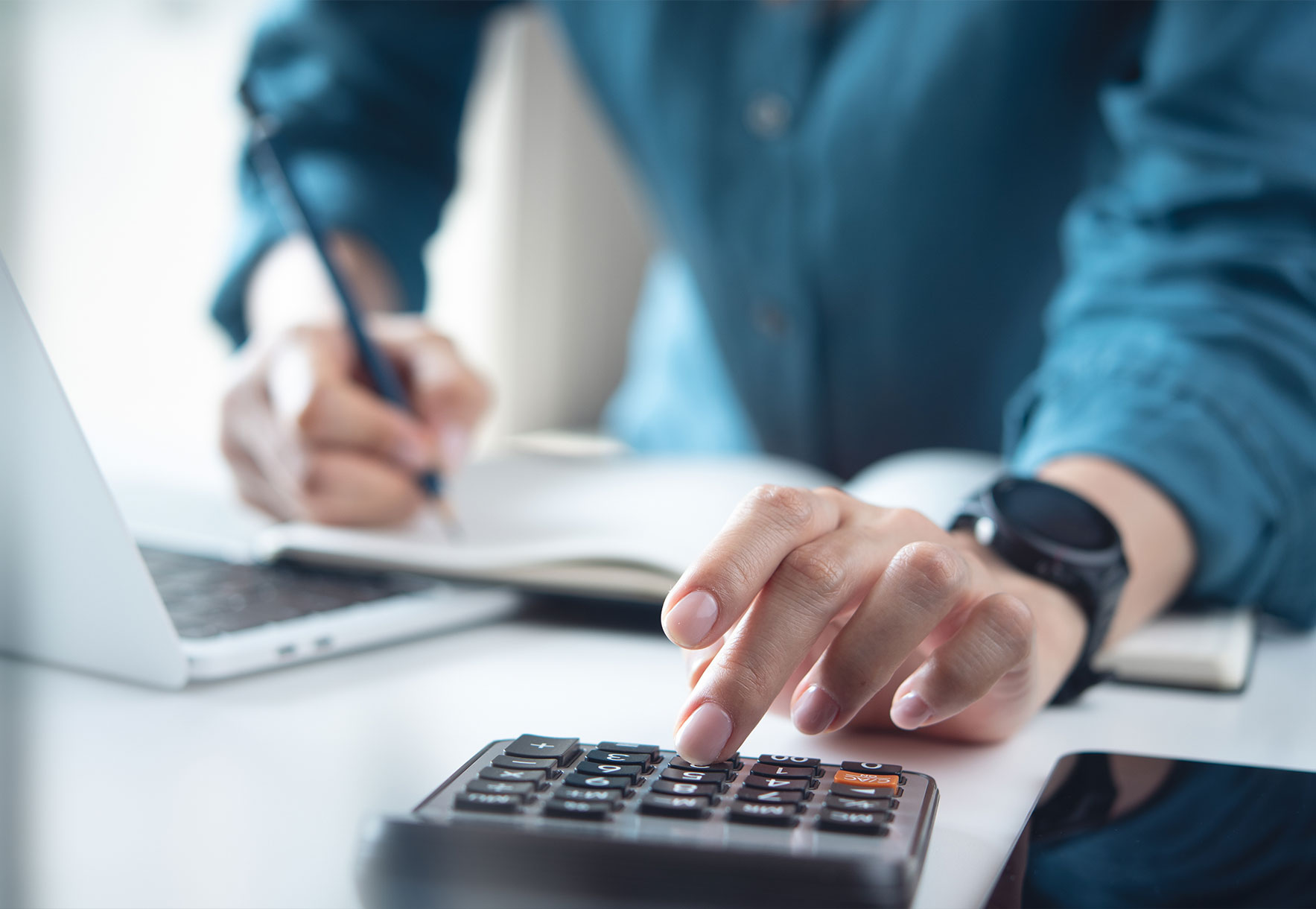
A Foundation for Long-Term Innovation
Beyond short-term wins, microservices support the long game. They make it easier to integrate emerging technologies, shift workloads between clouds, and scale globally without constant rewrites. With the right governance and infrastructure in place, microservices evolve with your business—supporting rapid experimentation while keeping complexity under control. They’re a key enabler for continuous improvement and sustained digital transformation at a reasonable cost.
Take Your Next Step
Want to see how microservices work in practice? Sys.tm is built for real business challenges. It helps you modernize outdated systems, improve performance where it matters most, and create space for future growth without overhauling everything at once.
If you’re exploring what’s next, talk to someone on our team. We’ll walk you through what a composable approach could mean for your systems, your goals, and your bottom line.


